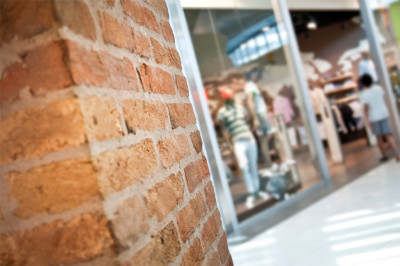Welcome to the fourth and final post in a series of blog posts aimed at explaining how to attract and retain Millenials by examining workplace attributes. In my first post, I explored the macro business shifts that created the current business climate for Millenials. I then explained some key learnings about Millenials from various studies. In my last post, I explored the workplace attributes that help organizations attract and retain their future workforce. Finally, in this post I’ll explore some alternatives and reimaginings of the traditional office.
Plus: What studies reveal about Millennials | Current business climate for Millennials
As you’ll recall in my last post, I identified six attributes that make a great workplace:
- Workplace: Layout of the office including its space and architecture
- Technology: IT infrastructure supporting the work
- Human Resources: Policies supporting the people who do the work
- Culture: Values and ideals driving the work
- Wellness: Amenities and other provided support within the environment that contributes to overall worker health and wellness
- Brand: How the brand connects the company and the product to the space and the people within it
When it comes to employees, Keith Perske, a thought leader in workplace innovation, says we have the macro options of housing them “internally” in an office or “externally” off-site. There are sub-options within each of these two. For instance, if we choose to house them internally, we can go with a traditional office environment or open plan. Externally, we can house them in their own homes, a client site or some other option. The ubiquitous coffee shop is an example — though, speaking personally, I don’t see how anyone gets any work done with all the noise. There is a fourth option, as well: coworking, which has seen tremendous uptake recently by more than just startups.
Also: Six attributes that make a great workplace | How workplace can improve your productivity
Regardless, floor plans should provide enough options to accommodate different work modes:
- Focus (heads-down work)
- Collaboration
- Informal networking among employees
- 1:1 development.
Workers engage in all of them, although the proportions will differ based on their function within the organization. Whether accommodating these modes takes the form of small huddle rooms, phone closets, snack hubs, cubicles or formal conference rooms, the choices should be made with the six attributes described above front of mind. Finally, add in the assignability factor (either one employee to one desk or several employees to one desk) to create more complexity to your decision-making process, and spend time conjecturing on how that will ultimately affect your employees.
Understand that, from a corporate real estate (CRE) perspective, the strategic decisions we make impact our cost structure, the internal resources allocated to procure the locations and our employees’ engagement levels. We should weigh all the criteria in as holistic manner as possible, understanding that all criteria and factors will impact one another. As the old saying goes, “Cheap, fast and good: Pick two,” so too can that thinking be applied here.
Now that we have an understanding of the factors and attributes that go into the workplace, let’s take a look at some examples of workplaces that incorporate everything we’ve spoken about and do so in nontraditional ways that work for the organization. These would include alternative office settings, alternative build-outs and alternative arrangements.
Alternative office settings: These encompass the “external” office settings described above, also known as working from your home, your client’s site or some other location. Discussing how to set up your home office is beyond the scope of this series; however, the “some other location” is what we’re going to focus on here. A library or a coffee shop is what the standard was when spaces of these types were first explored. Now, with the rise of coworking and coworking networks, mobile workers have so many more options to choose from. Coworking spaces are thriving, and firms such as WeWork, probably the most high profile example, are building networks of coworking spaces across the country, though primarily focusing on major cities. From a corporate real estate perspective, leveraging these networks could save your CRE organization time, money and headache, while boosting employee engagement.
Alternative build-outs: You’ve seen the Google offices, the Facebook offices and the world’s coolest office buildings — okay, maybe not, but these are better examples of what we’re talking about. What do these spaces have in common? They connect their brand to the space and provide different types of space to support the focus, collaboration, networking and development work all workers engage in. The laundry list of different types of space include hoteling, hot desks, phone booths, huddle rooms, hubs and more. The list goes on. The point is that there is variety that can provide the right type of setting for the type of work that needs to be done.
Alternative Arrangements: Most every CRE organization I work with struggles with maintaining occupancy rates at optimal levels (between 85 to 90 percent depending on the industry). And while demising and subleasing excess space is an option, in some cases it may not be. What to do with the excess space you can’t sublease? Partner with a firm that aggregates excess space and markets it on your behalf. Firms like LiquidSpace and PivotDesk specialize in marketing your excess office space to other users, providing flexibility to an end user looking for space (instead of the coffee shop) and providing your CRE organization a win-win – by increasing utilization levels, bringing in some income and adding energy to a dead space.
While not specific to Millenials, the six workplace attributes, four work modes and three options described above can help your CRE organization arrive at the right mix of space and cost structure that works for your enterprise, regardless of generation.
Finding this right mix of internal and external space to accommodate your employees — in addition to understanding that all the attributes, cost, time and quality need to be balanced — will help you prioritize how to support your workers in environments that provide you a comparative advantage.
Ron is Managing Director of Strategy & Innovation for Corporate Solutions for Colliers International in the Americas. Connect with Ron on Twitter or LinkedIn. In his spare time, he runs … around the house after his infant daughter.

 Ron Zappile
Ron Zappile

 Anjee Solanki
Anjee Solanki
 Colliers Insights Team
Colliers Insights Team
 Coy Davidson
Coy Davidson